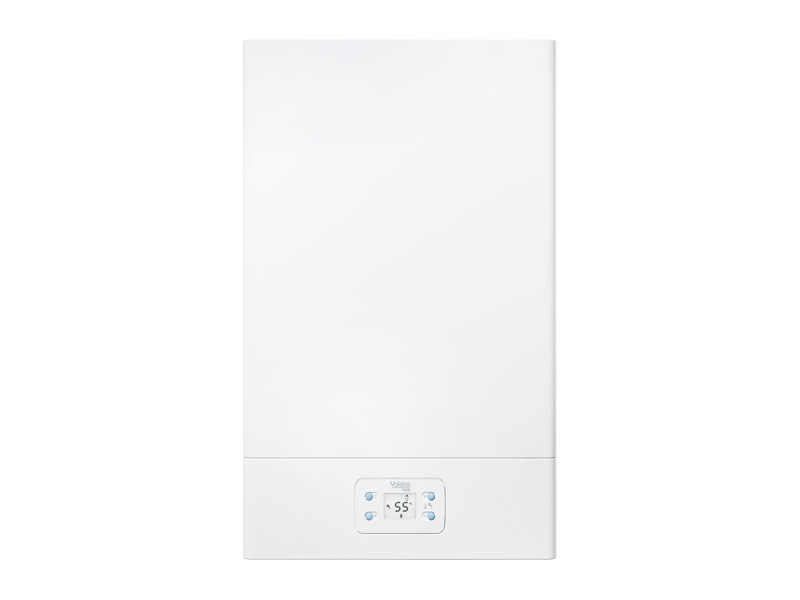
Sep 17, 2019 | News & Events
Vokèra by Riello launches AquaNova LE, a simple and energy-efficient solution for providing instantaneous domestic hot water to multiple outlets at a high flow rate. With low nitrogen oxides emissions, this new addition is classified under the Ecodesign of Energy-related Product Directive (ErP) Class A, making it fully compliant with the latest ErP Tier 3 requirements. It is ideal for domestic and small, light commercial applications that require an instant and reliable hot water supply, such as restaurants and shops. Vokèra, through its parent company Riello Group, is a part of Carrier, a leading global provider of innovative heating, ventilating and air conditioning (HVAC), refrigeration, fire, security and building automation technologies.
“Easy to install and to service and featuring a powerful heat output, our new AquaNova LE offers a continuous supply of hot water, and can be used simultaneously at various outlets while delivering a high flow-rate,” says Alister Maclachlan, product director, Vokèra. “In addition, this compact water heater takes up less space than a conventional storage tank and virtually eliminates standby losses as energy isn’t wasted when hot water cools down in long pipe runs or while it’s sitting in the tank.”
Delivering a flow rate of 13.2 litres per minute at temperature rise of 35 degrees C, AquaNova LE can fit applications where space is at a premium. Continuous gas modulation and electronic temperature sensing ensure accurate temperature control for user safety and comfort. A temperature lock function can be used to limit the outlet temperature, while a keypad lock function prevents tampering. The appliance features a digital display and user interface for ease of operation and there is also a fault code display function for diagnostic purposes. For increased efficiency, the appliance’s electronic ignition eliminates the need for a constantly running fan or energy-wasteful pilot light.
AquaNova LE is available in natural gas and liquefied petroleum gas (LPG) versions and is also designed to accept pre-heated water for solar integration. Installation and commissioning are simple with all connections easily accessible and a built-in fly lead. The appliance is designed for flexible flueing and can be flued horizontally or vertically using Vokèra’s concentric uni-flue or twin-flue systems. Units also include stand-off brackets required for rear outlet flue exit. Servicing has also been simplified as there is no diaphragm or water section, which reduces maintenance requirements.
Summing up this latest innovation, Maclachlan, says: “When new ErP efficiency requirements for water heaters came into effect in September 2018, many existing appliances no longer complied. AquaNova LE has been specifically developed to provide a compliant solution that combines high performance with ease of installation, and is backed by our two-year warranty.”
For more information on AquaNova LE, please visit www.vokera.co.uk/trade-professionals/water-heaters.
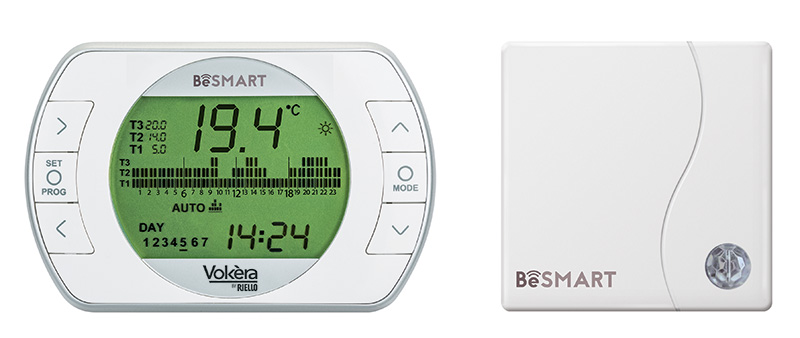
Sep 1, 2019 | News & Events
Since the introduction of condensing technology, boilers have continued to increase in efficiency, with most current appliances able to reach over 90% efficiency. Neil Mattock, marketing director at leading heating manufacturer, Vokèra by Riello looks at how the correct use of control can further enhance boiler efficiency and performance without compromising comfort.
The technology within boilers is now so advanced that, even with future developments, there seems little chance of boiler efficiency percentages increasing much beyond current levels. This being the case, other ways are needed to maximise energy and fuel savings for the sake of both the planet and hard-stretched household budgets. One solution is the use of heating controls which, when correctly installed and used, can optimise comfort and economy for end-users. Modern central heating controls provide homeowners with the flexibility to have the boiler on at different times of the day and at different temperatures. Some devices can even sense the temperature automatically and adjust the boiler operation, while an Internet connected smart thermostat offers the added convenience of controlling the home temperature remotely via a tablet, smartphone or desktop computer.
Boiler Plus
The energy saving potential of high efficiency heating controls was recognised in Boiler Plus, new standards for domestic heating that came into force in England in April 2018. This latest legislation is aimed at giving consumers more choice over the way they heat their homes and more control over their energy bills. Boiler Plus set a new minimum space heating efficiency of 92% under the Energy-related Products (ErP) Directive for domestic gas boilers in English homes. As already mentioned, most of today’s condensing gas boilers already achieve this minimum – in fact, all models in Vokèra’s A-rated evolve range feature a space heating efficiency of 94% under ErP.
As part of its remit to help consumers cut their energy bills, Boiler Plus also requires an additional energy saving measure when fitting a new combination boiler. The options are to install a flue gas heat recovery system, which may not always be practical, or one of a choice of controls, namely weather compensation, load compensation, or smart controls featuring automation and optimisation functions.
Weather compensation interacts intelligently with the boiler to reduce the heating flow temperature, which increases efficiency without compromising user comfort. Indeed, the average efficiencies in a condensing boiler can be increased by an extra 2% with the simple addition of a weather compensation control. The load compensation option measures the gap between what the internal temperature is and what the user wants it to be, and modulates the boiler so that it only uses as much fuel as necessary to close the gap.
Intelligent choice
In addition to ensuring compliance where applicable, installers face a potentially confusing choice of controls to meet their customers’ particular requirements and budgets. There are controls that can be used with combi and system boilers that include basic time clocks, there are basic room thermostats, programmable room thermostats, and so-called ‘intelligent’ options that incorporate the most advanced technology available, such as weather compensation.
Over the past few years, forward-thinking boiler manufacturers like Vokèra have developed a comprehensive range of innovative appliances and control devices to help reduce the amount of fuel used by boilers to heat a home. For example, the majority of our domestic boilers now come with a pre-configured weather compensating function and are OpenTherm protocol enabled to help maximise efficiency. In essence, OpenTherm takes over the management of the heating flow temperature and raises or lowers the flow temperature from the boiler in order to maintain the desired room temperature. When used in conjunction with an external weather compensation sensor the flow temperature to the heating system increases as the outside temperature drops: if the external temperature rises, the heating flow temperature lowers accordingly. Combining the sensor with an OpenTherm programmable room thermostat will ensure the internal target temperature is maintained within the property.
Get smart
From our experience, smart heating controls don’t come much smarter, or simpler to install than BeSMART. Although designed to complement the Vokèra boiler range, this versatile control will also work with most high efficiency domestic boilers with On/Off control, making it an ideal replacement for old thermostats. BeSMART can be set-up for single or multi-zone control, with an impressive eight-zone maximum. The BeSMART App is available on both iOS and Android and works on a smartphone or tablet. Users can adjust the temperature, programme in settings and even check the boiler operating conditions, providing them with new levels of control over their heating system.
Take control
When it comes to heating their homes, consumers are bound to be attracted to controls that combine ease-of-use and affordability with additional energy efficiencies that won’t compromise comfort. It’s no surprise, therefore, that smart heating controls incorporating features such as automation, optimisation, and weather compensation using local weather data via the web, are an increasingly popular way for many homeowners to keep their houses comfortably and affordably warm. As the market continues to move towards smarter heating, we believe astute installers should embrace this sophisticated yet simple to use control technology for the benefit of their customers and their business.
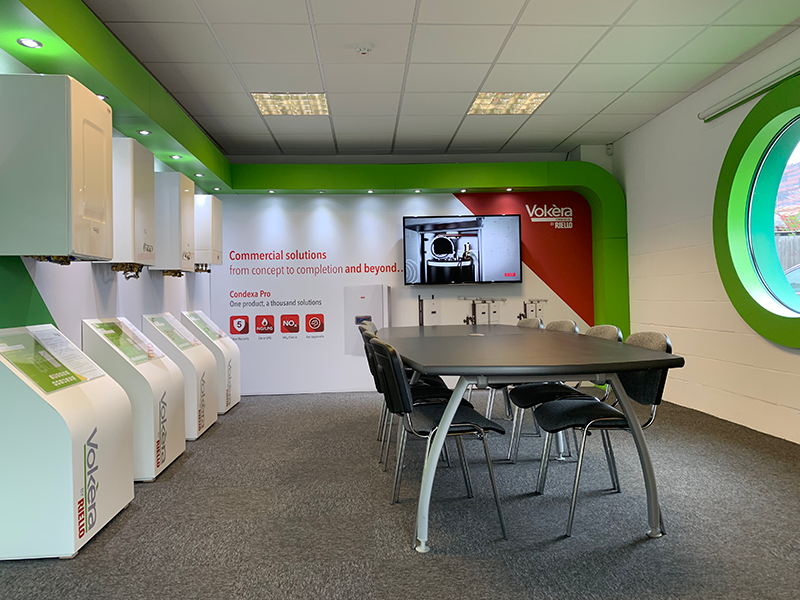
Aug 1, 2019 | News & Events
Leading heating manufacturer Vokèra by Riello has opened a new showroom in the training centre at its head office in London Colney. The venue showcasing Vokèra’s new and existing products for both the commercial and domestic heating sectors provides an ideal space for meetings and presentations. Vokèra, through its parent company Riello Group, is a part of Carrier, a leading global provider of innovative heating, ventilating and air conditioning (HVAC), refrigeration, fire, security and building automation technologies.
Vokèra’s addition to the existing training facility, which offers specialist training courses for installers and continuing professional development (CPD) training courses for specifiers, reflects the ongoing commitment to supporting its customer base.
“The showroom really enhances London Colney’s main product training centre for heating installers and specifiers,” said Neil Mattock, marketing director and head of training at Vokèra. “Whether you are a local community or commercial installer, college, plumber’s merchant or domestic installer, you can visit our London Colney centre to see our latest products and talk to our experienced team about the issues that affect your business and the wider industry.”
To contact Vokèra’s training department, call 01727 744002 or email [email protected].
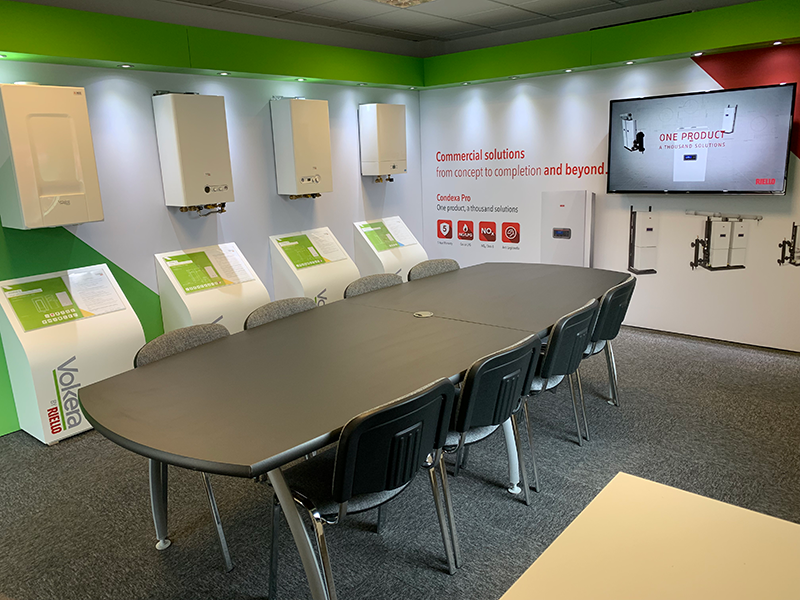
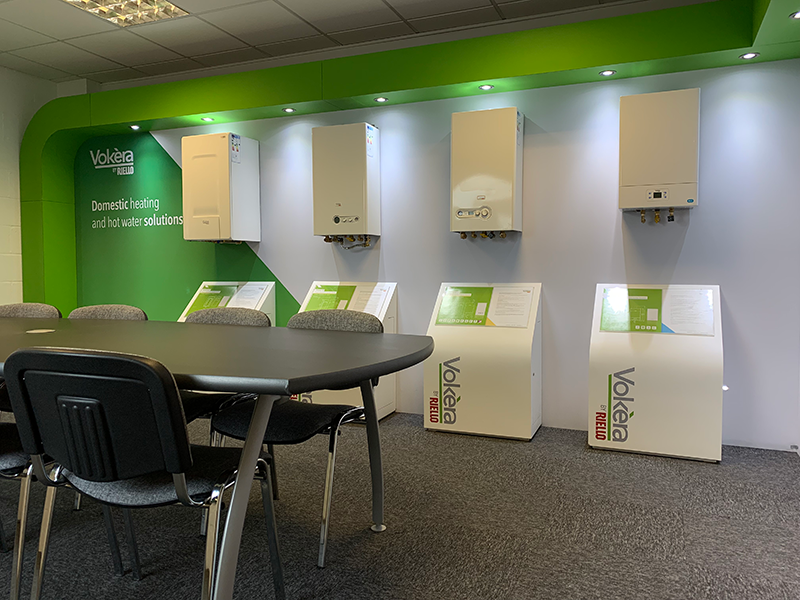
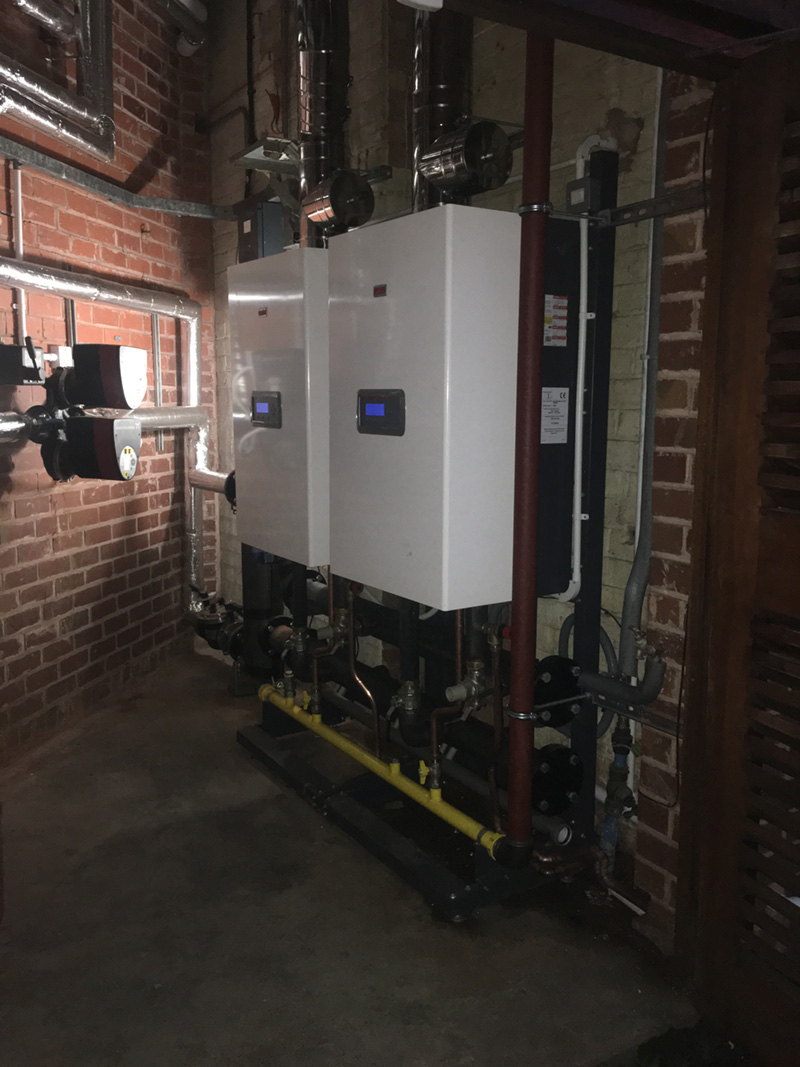
May 20, 2019 | News & Events
Compact, high power Condexa Pro condensing boilers from Vokèra by Riello ticked all the right boxes when it came to converting a former council building in Smethwick into modern private offices. Installed on a cascade rig, two 90kW Condexa Pro fully modulating gas boilers replaced the building’s inefficient and outdated boilers and significantly reduced costs by eliminating the need for a Building Management System (BMS). Vokèra, through its parent company Riello Group, is a part of Carrier, a leading global provider of innovative heating, ventilating and air conditioning (HVAC), refrigeration, fire, security and building automation technologies.
The modularity of the Condexa Pro system meant output could be accurately sized to suit the new heating demands of the building with maximum efficiency, and in a compact footprint to fit the small, triangular-shaped plant room. Thanks to the boiler’s advanced, built-in features, there was no need to install BMS controls, which saved project time and cost, as the Condexa Pro boiler controls are able to manage the day-to-day operation of the heating system.
Vokèra worked with heating, plumbing and gas specialists, Bog Standard Plumbing, to specify and supply a Condexa Pro system to meet the project’s bespoke requirements, including the confined space in the unusually shaped plant room. This was Bog Standard Plumbing’s first Vokèra boiler installation.
Ronnie McGrory, Managing Director of Bog Standard Plumbing, said, “Because Vokèra is part of Riello, whose burners we know and trust, we were confident that the Condexa Pro boilers would be of the same robust quality and reliability – and they are. Vokèra’s technical team provided excellent support throughout, from sizing the boilers to advice on wiring sequences, and the ordering process and delivery all went very smoothly. As well as combining high efficiency and control, the small footprint of the two 90kW Condexa Pro boilers in cascade configuration fits the plant room perfectly.
“Given the success of this first installation, we’ll definitely be recommending Condexa Pro again. In fact, we’ve already got a quote for another contract.”
Introduced in the UK in 2018, Condexa Pro is the latest addition to Vokèra by Riello’s high power condensing wall-hung boiler range. This A-rated boiler combines latest generation electronic control with modularity and compact dimensions for installation flexibility in a variety of applications, including residential and office buildings, hospitals, schools and manufacturing facilities. From standalone boilers to multiple cascades and with a wide range of optional accessories, Condexa Pro offers seemingly endless configurations that can help specifiers and installers overcome any complex or challenging installation they may encounter.
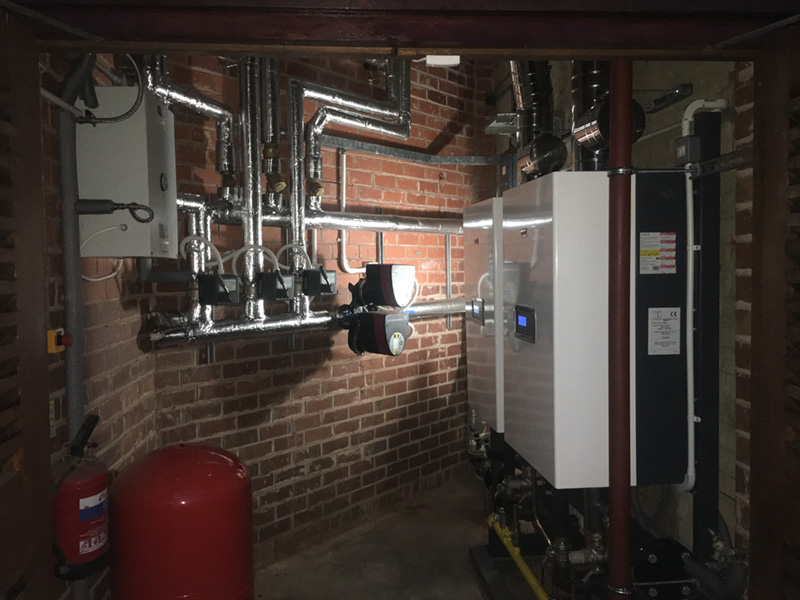
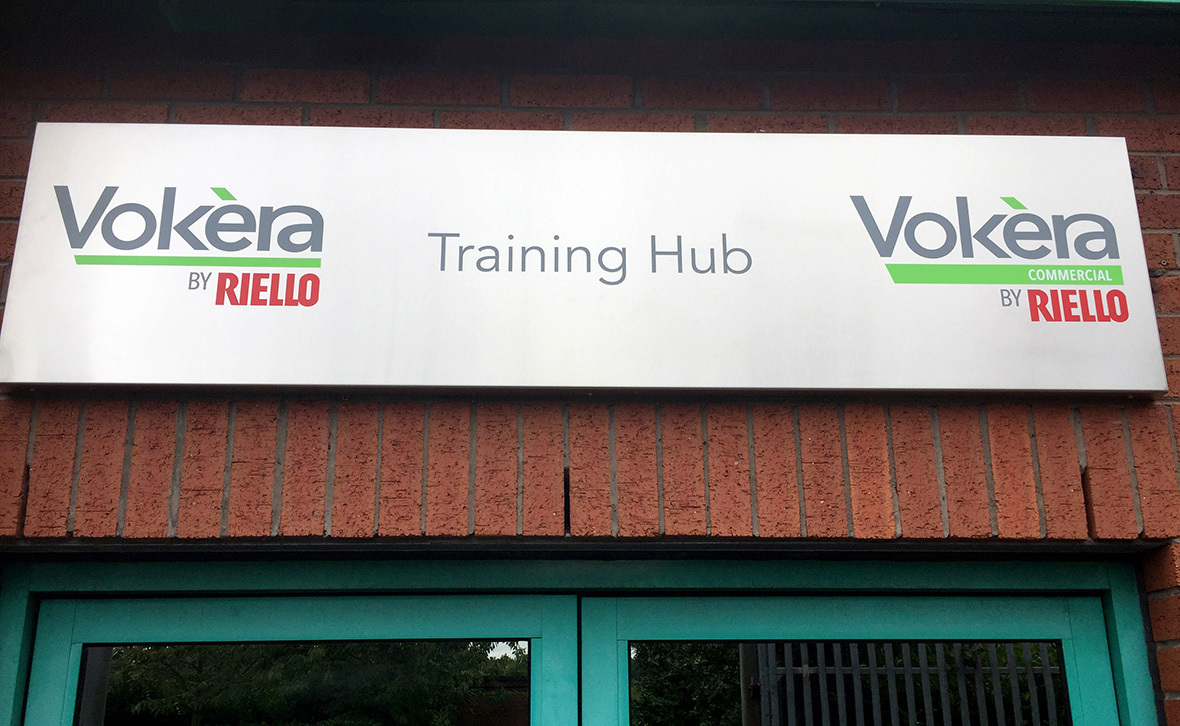
May 3, 2019 | News & Events
Vokèra by Riello, a leading heating manufacturer, has announced the launch of new commercial training hubs at its facility in Bradford, West Yorkshire, and at its head office in London Colney. Offering free, one-day specialist training courses for installers and continuing professional development (CPD) training courses for specifiers, the new training rooms complement the company’s existing training facilities for domestic installers. Vokèra, through its parent company Riello Group, is a part of Carrier, a leading global provider of innovative heating, ventilating and air conditioning (HVAC), refrigeration, fire, security and building automation technologies.
The training hubs focus on the new Condexa Pro high-power wall-hung condensing boiler range, a versatile, efficient boiler that allows installation flexibility for organisations where space is a significant consideration. It is ideal for numerous applications such as schools, hospitals, data centres, manufacturing facilities and residential homes. Displayed at the training hubs are plate heat exchangers and buffer vessels that are compatible with the company’s commercial range, as well as examples of legacy Vokèra commercial heating boilers for maintenance training.
“These are exciting new training facilities that allow us to offer dedicated support to our network of commercial installers and specifiers from locations that are conveniently accessed by road, rail and air,” said Neil Mattock, marketing director and head of technical training, Vokèra. “Our dedicated courses will give them everything they need to recommend our commercial range with confidence, whilst also increasing their expertise and experience with hands-on instruction. We fully believe in supporting the people on the road as much as we can, and these new additions to our installer support services show how much we value these relationships.”
For further information on the full range of courses available, please visit www.vokera.co.uk/trade-professionals/technical-training/

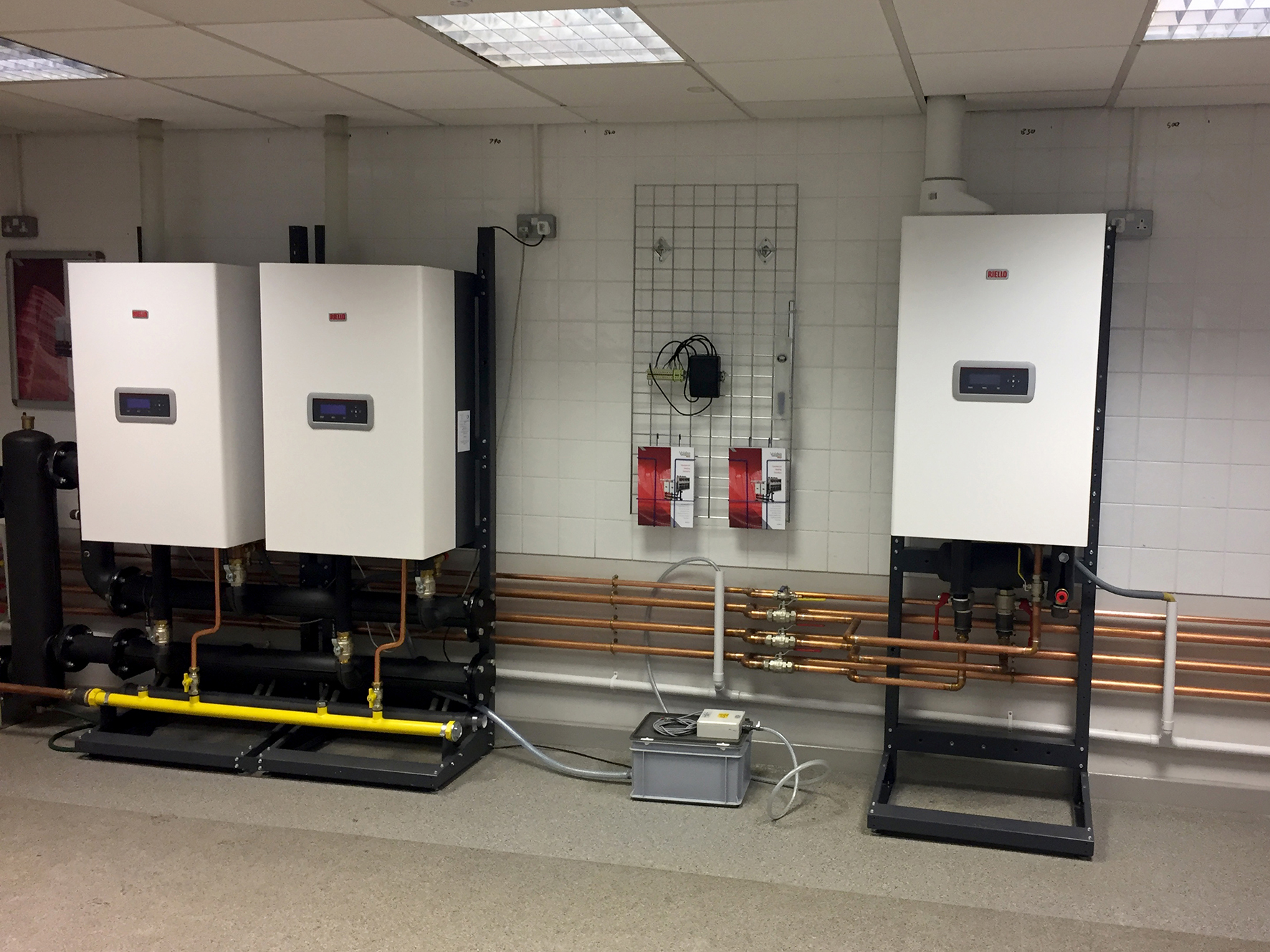
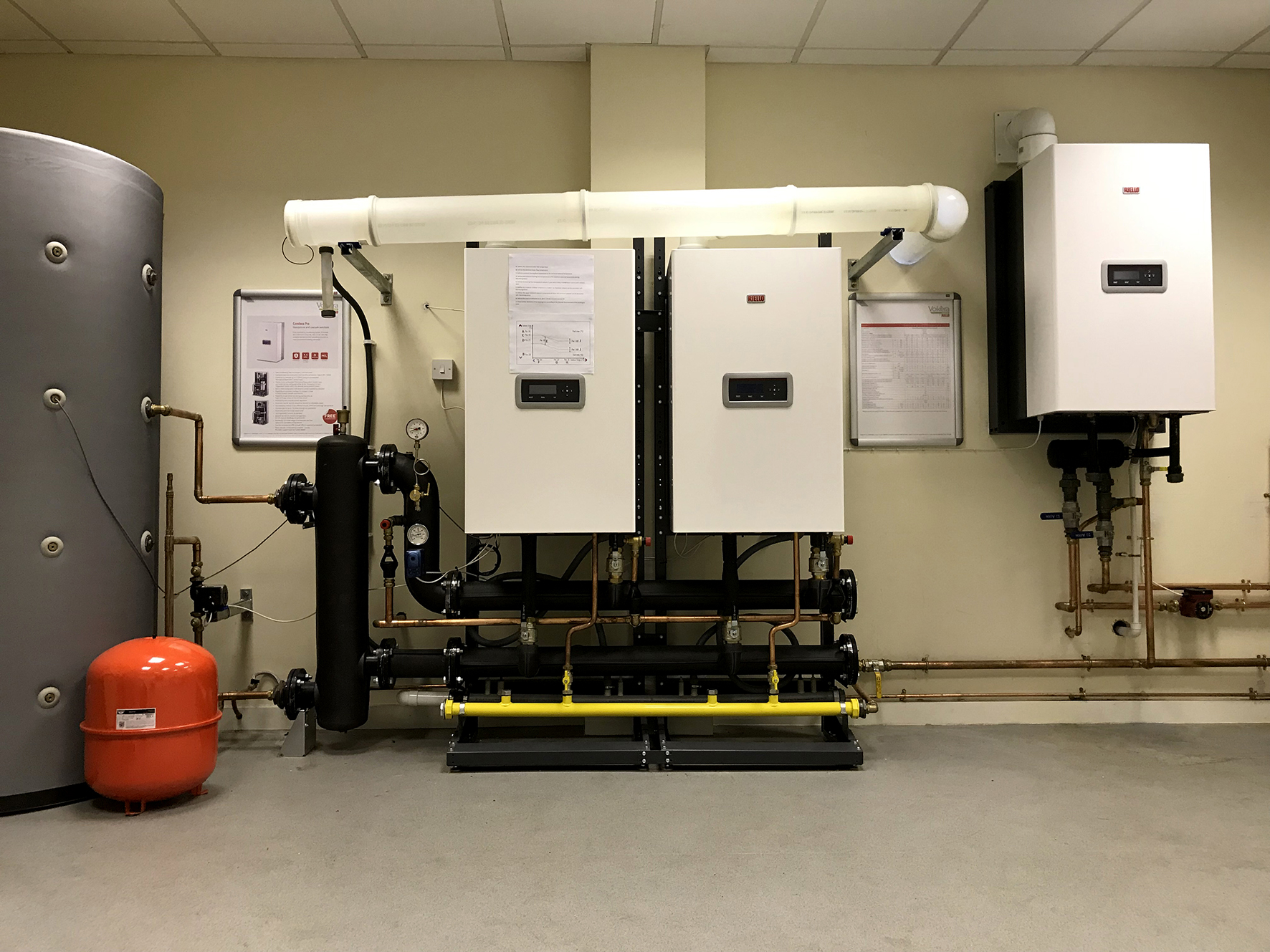
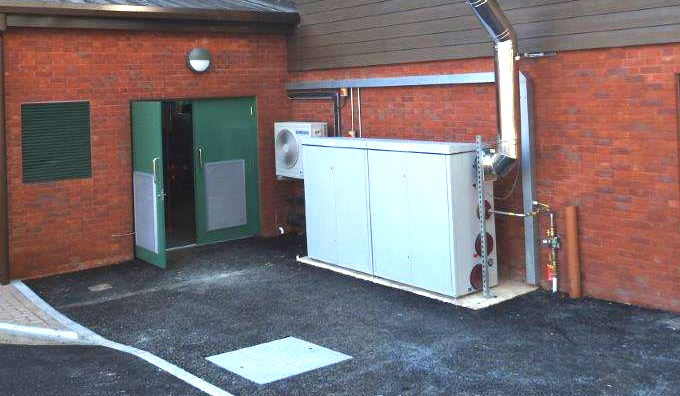
May 3, 2019 | News & Events
Condexa Pro 500 Box, a pre-built floor-standing cabinet commercial boiler from Vokèra by Riello has provided a plug and play heating solution for a prestigious independent preparatory school in Berkshire. The fully modulating gas condensing boiler replaces an outdated oil-fired boiler and oil storage tank at the school and is installed externally, freeing up valuable internal space. Vokèra, through its parent company Riello Group, is a part of Carrier, a leading global provider of innovative heating, ventilating and air conditioning (HVAC), refrigeration, fire, security and building automation technologies.
With indoor space at a premium, the ability to install the Condexa Pro 500 Box boiler outside was a key benefit for the school, as was the compact footprint. The self-contained units are supplied with water and gas manifolds, flue exhaust duct and condensate evacuation line already fitted and connected. A water drain for each heating unit is also built in as standard. When required, an internal solution is also available.
In addition to its space-saving design, the Condexa Pro Box boiler offers exceptional efficiency versus return water temperature. Units incorporate a highly efficient heat engine, resulting in an extremely low return temperature/flue exhaust gas temperature (temperature differential). To assist specification, Vokèra’s technical team is able to calculate how much clients could save on their annual energy consumption by installing a Condexa Pro Box, based on their existing fuel tariffs. The boiler’s impressive energy efficiency is complemented by minimum polluting emissions due to the controlled pre-mix burner and micro-flame burner combination.
The Condexa Pro 500 Box boiler specified for the replacement project at the school features four heat exchangers in cascade configuration, offering 200kW total output. The innovative design enables easy access to all components from the front, and each combustion unit can be individually serviced and maintained without loss of other units, ensuring uninterrupted operation.
Condexa Pro Box fully modulating condensing boilers also boast the latest generation electronic control. Although the compact in-line solution installed at the Berkshire school is connected to an existing Building Management System (BMS), the boiler’s sophisticated heating control and monitoring may negate the need for a BMS in some applications. The advanced remote control facility allows a maximum distance of 100 meters and makes it possible for end-users to manage functions such as setting the boiler’s on and off timings and weekly programming of the circuit.

Apr 15, 2019 | News & Events
As the first anniversary of Boiler Plus approaches, Alister Maclachlan of Vokèra by Riello assesses the impact of this initiative and how the Government’s proposed policy review in April 2019 will be an opportunity to clarify some aspects of the legislation for installers and their customers.
Greater choice
Introduced in England by the Department for Business, Energy and Industrial Strategy (BEIS) in April 2018, Boiler Plus set new minimum performance standards for domestic gas boilers and made fitting timers and room thermostats a requirement to reduce energy costs for consumers. With the consumer at the heart of the legislation, Boiler Plus was designed to give people greater choice and more information about the products that are available to help them achieve optimum comfort and energy savings. But what’s the reality nearly one year on?
Although Gas Safe registered installers haven’t had to undertake any additional training to comply with Boiler Plus, it is obviously important that they understand the different options within the legislation in order to be able to advise their customers on the best solution for their particular needs. In this respect, Boiler Plus has placed greater responsibility on installers’ shoulders and so it is essential that they have the information they need regarding the benefits of each solution and the knowledge and skills to ensure best practice is followed.
Clearing the confusion
Going by the number of queries to our Technical Helpline since the new standards were introduced, there is some confusion surrounding certain aspects of the legislation. For example, an installer in the process of fitting one of our water heaters was asked by the householder if the unit complied with Boiler Plus. Unsure of the answer, the installer called our helpline and a member of our team was able to confirm that water heaters are outside the scope of Boiler Plus. Whilst it is unlikely that the legislation will be extended to cover water heaters, DHW demand does appear to be on the increase in many modern households. Delivering instantaneous hot water to multiple outlets at high flow rates, the latest high efficiency water heaters, such as Vokèra by Riello’s new AquaNova LE, can offer a reliable, energy saving domestic hot water supply for showers and other domestic applications.
Affordable option
Under Boiler Plus a new combination boiler must incorporate one of the following measures within the system:
- Flue Gas Heat Recovery (FGHRS).
- Weather Compensation.
- Load Compensation.
- Smart Controls featuring automation and optimisation functions.
I suppose it is inevitable that end-users and installers will be attracted to the measure that combines compliance with affordability, yet which still provides additional efficiencies without compromising comfort. Since Boiler Plus was introduced in April 2018 Vokèra has seen sales of external weather compensation sensors rise by approximately 60% compared with the same period in 2017. Clearly, this measure is regarded as a relatively low cost means of complying and the easiest to install compared with, say, smart controls or FGHRS. Perhaps it is not surprising that the FGHRS option is not proving particularly popular. These usually large, rather bulky units aren’t very attractive and there isn’t always enough space above the boiler to fit them.
Not so smart
Smart controls (complete with automation and optimisation) can provide an effective additional efficiency measure. However, some areas of the industry are calling for the definition of a smart thermostat within the context of Boiler Plus to be stipulated as an internet-connected device offering remote control of the heating system using a smartphone app, for example. Clarifying this in the forthcoming policy review would certainly distinguish a Boiler Plus compliant control from cheaper so-called ‘smart’ thermostats that are non-connected and which don’t offer consumers the same level of efficiency or convenience.
Whilst there are a number of compliant smart control solutions, it is worth looking for any additional features that will add to the usability of the control, ensuring the homeowner can make the most of their heating system, manage their energy efficiently and maximise comfort. The OpenTherm protocol RF control from Vokèra, for example, enables energy saving modularity and includes a handy ‘holiday’ function. Our BeSMART Wi-Fi enabled smart thermostat also offers full compliance and is very easy to install and intuitive to use. As an internet-connected device it allows homeowners to manage up to 8 different heating zones from anywhere in the world through the BeSMART App. In addition, a weather compensation function can be added that adjusts boiler output to reflect ambient temperature with no need to fit an external sensor. As a further benefit, BeSMART can alert customers (who have subscribed to remote monitoring) and the Vokèra Service Centre if something goes wrong, minimising disruption.
Positive change
We know change can be daunting and it can take time for industry to adjust, but we believe Boiler Plus should be seen as a positive change that will help tackle climate change and keep household energy costs down. At Vokèra we also welcome any initiative that steers installers towards fitting more advanced controls, thereby increasing their technical skills and bringing energy saving benefits to their customers. Nearly one year on, there are clearly some areas of Boiler Plus that could be improved – let’s just hope the distraction of Brexit doesn’t prevent the Government from addressing these issues and keeping its pledge to review this important legislation in April.

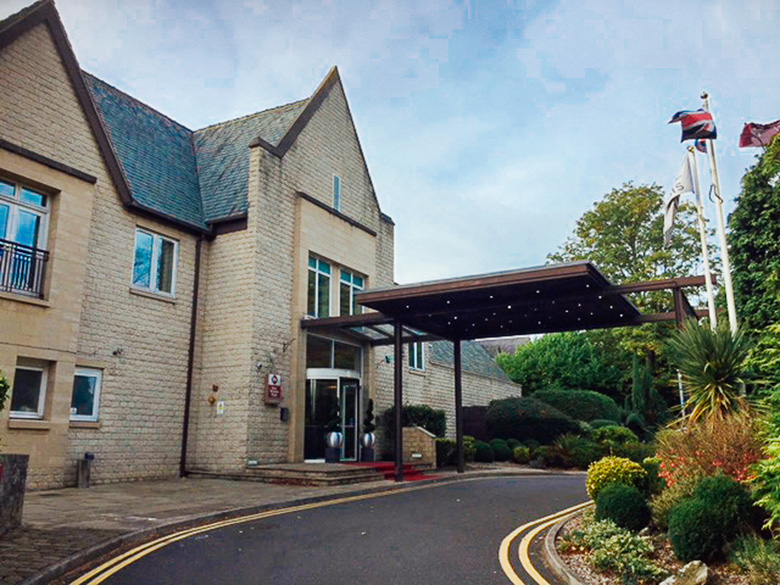
Mar 15, 2019 | News & Events
Space-saving design, system flexibility and advanced electronic control make Vokèra by Riello’s all-new Condexa Pro condensing boilers an ideal solution for a luxury hotel in Sheffield. The Best Western Plus Kenwood Hall has replaced six outdated boilers serving hotel rooms, kitchen, restaurant and public areas with three compact Condexa Pro 90 units. Vokèra, through its parent company Riello Group, is a part of Carrier, a leading global provider of innovative heating, ventilating and air conditioning (HVAC), refrigeration, fire, security and building automation technologies.
The new boilers are installed in a linear cascade configuration on a precision-engineered framework, purpose-designed to assist installation and allow easy access to all components from the front. In addition, logic integrated in the electronic control allows each boiler to operate either as a primary or a secondary in the cascade, ensuring constant operation, even while being serviced.
The Condexa Pro units replaced boilers that had become increasingly unreliable and inefficient. Sim Cowen, Managing Director, B P Dempsey Ltd, the local commercial heating specialists, recommended replacing them with Condexa Pro units.
“Cowen recommended Vokèra by Riello and his advice was spot on,” said Gary Dodd, Maintenance Manager at Kenwood Hall. “Our new Condexa Pro 90 boilers haven’t missed a beat since they were commissioned. In fact, they will probably be our preferred choice when the time comes to replace the remaining existing boilers at Kenwood Hall – and possibly across the group’s other hotels in the area,” he added.
Vokèra’s sales and technical team provided a comprehensive support package for the project, including a pre-sales report showing the proposed Condexa Pro 90 cascade configuration and how this would fit into the confined plant room space. Vokèra was also able to handle the requirement for an extended external flue to clear the roof of the hotel, which saved the cost of a specialist flue contractor.
“Kenwood Hall was my first Vokèra by Riello project but I’m sure it won’t be my last,” Cowen said. “The new Condexa Pro offers excellent value for money and it is designed to adapt to the most varied plant requirements. It’s also very compact and powerful, which meant that we were able to replace six old boilers with just three 90kW Condexa Pro which are more than able to meet the hotel’s heating needs in terms of output and efficiency.”
Vokèra by Riello’s new range of Condexa Pro wall-hung condensing boilers extend from 35 up to 131kW and offer solutions for new plants, replacements or renovations of old heating systems. Each versatile appliance forms the principle element in a system with almost limitless configurations, from simple standalone solutions to modular cascade systems, as at Kenwood Hall, that can accommodate specific requirements thanks to the wide range of accessories.
Among the most innovative components of the new Condexa Pro is an optimised stainless steel heat exchanger, designed and manufactured by Riello, with single or double coil patented sections and premix burners for high turndown ratio and low emissions. In addition, the calculation speed and advanced management algorithms of the electronic control system allow regulated ambient temperatures and the best possible operation performance both for standalone boilers and for multiple cascades up to 10 units.
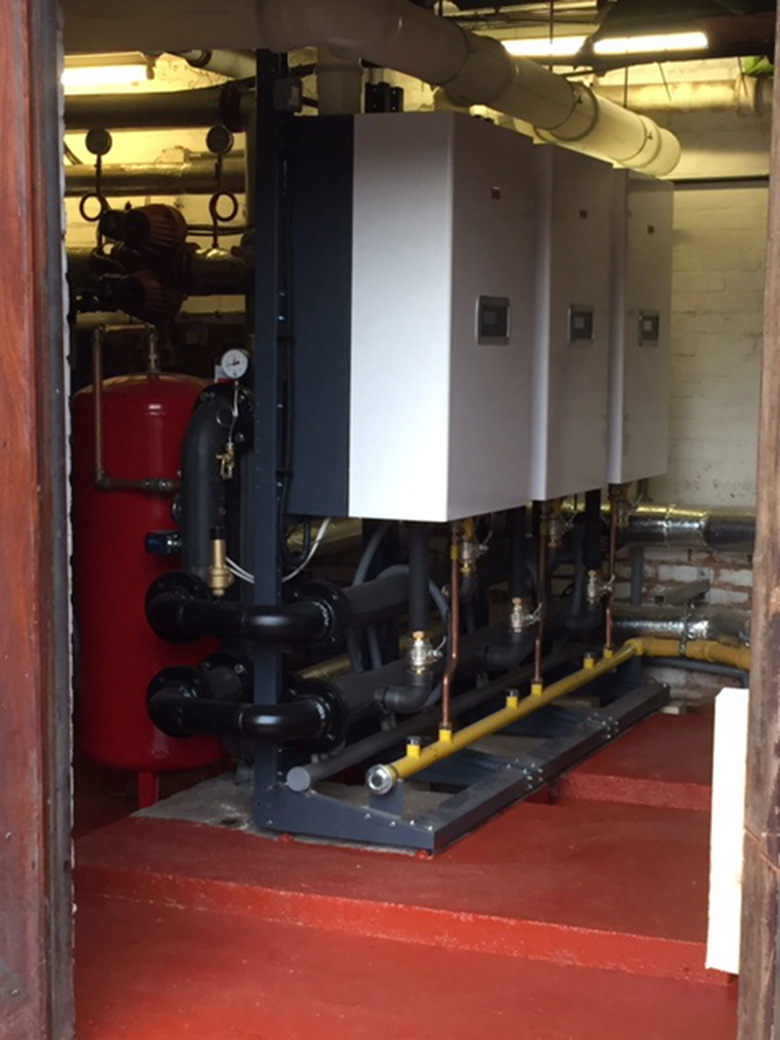

Feb 7, 2019 | News & Events
John Smith, National Service Manager UK at Vokèra by Riello, offers advice on keeping condensing boilers running reliably and efficiently during a winter freeze.
Whilst it may be too early to predict whether the UK will suffer another ‘Beast from the East’ this winter, it is always better to be prepared for whatever the weather has in store. As any installer will know, when the temperature drops and central heating thermostats are ‘turned up’ the number of calls to fix ‘broken’ boilers goes up too. Whilst modern boilers are designed and tested to deliver optimum quality and reliability they still have moving parts that can be affected by general wear and tear, as well as parts that have a natural lifespan and need to be replaced. However, ensuring that an inconvenient and potentially costly breakdown doesn’t happen when the appliance is most needed could be avoided.
Getting a gas boiler serviced on an annual basis by a Gas Safe registered engineer is key to ensuring a boiler won’t let the homeowner down when the cold weather arrives and please remember to follow the manufacturer’s instructions. For example, on sealed system boilers it is important to check that the system water pressure is correct as it may have dropped while the heating has been idle during the summer months. The expansion vessel also needs to be sufficiently charged and radiators may require bleeding, however remember to top up the system water pressure after. The heating system is tested to ensure it is operating correctly and should any problems be found these can be dealt with ensuring that the homeowner stays warm during the colder months.
Frozen condensate
When servicing high efficiency condensing boilers, now widely installed in UK households, condensate traps should be checked and cleaned where necessary for any combustion debris as this can lead to blockages, which will eventually cause the appliance to malfunction.
Prolonged periods of extremely cold weather can create another problem in this part of the boiler – frozen condensate. This happens when the condensate discharge pipe on the boiler freezes and becomes blocked with ice, eventually causing the boiler to shut down. This was an all too common reason for calls to boiler service companies during the severe winter in early 2018. So how can installers minimise the risk of freezing and keep their customers’ condensing boilers running whatever the weather?
Golden rules
A correctly installed and commissioned condensing boiler will extract latent heat from the flue gases and produce condensate, which must then be removed from the boiler. Building Regulations advise the correct way of terminating condensate discharge pipes and currently allow these to be run either internally or externally or a combination of both. A boiler shutdown due to a blockage caused by frozen condensate usually occurs when the pipe has been installed externally for some of its length and is, therefore, exposed to very low temperatures. A guide for installers to prevent frozen condensate in discharge pipes has been published by the Heating & Hotwater Industry Council (HHIC), stresses the importance of adhering to relevant standards and the appliance manufacturer’s instructions. Vokèra fully supports HHIC in its efforts to promote best practice among heating installers and by following ‘Golden Rules’ to avoid a frozen condensate.
1. Disposal method
Where possible, an internal condensate disposal method should always be the preferred option to keep pipework within the thermal envelope of the building. However, it should be noted that installing in unheated ‘indoor’ locations, such as a loft or garage, should be considered as ‘external’.
2. Pipe runs
External runs should be as short as possible, preferably no longer than 3 metres. Also, any external boiler condensate pipe must be a minimum internal diameter (ID) of 30mm, and insulated using suitable waterproof and weatherproof insulation.
Any internal condensate pipe should be a minimum of 19mm ID and upsized to 30mm minimum ID before passing through the building structure to the outside.
3. Adequate fall
Providing adequate fall is a critical factor as this allows the condensate to drain away correctly from the boiler under gravity and so prevents it from collecting in the pipe and freezing in winter. Vokèra recommends a minimum 3 degree fall, with bends and fittings kept to a minimum. It is also worth mentioning that this minimum drop must be maintained from the boiler right through to the discharge point.
4. Above the line
Where condensate pipework terminates externally to an outside gulley or drain, the pipe must terminate above the water line, but below the grate by at least 25mm, with the end cut at a 45 degree angle. A drain-guard should also be fitted: these steps help to minimise the risk of blockage or freezing through wind chill.
5. Checklist
Details of the condensate drainage installation should be recorded as part of the Benchmark Commissioning Checklist, a nationally recognised scheme managed by HHIC.
6. Electric Trace heating
Where an external condensate discharge pipe is installed, the customer should be made aware of the risks and consequences of its freezing and can be offered the option to fit trace heating (or other measures approved by the boiler manufacturer or service company) but must follow installation instructions of the trace heating manufacturer.
Promoting Best Practice
According to a report by the HHIC, during the peak of the extreme weather experienced in early 2018, the UK’s gas emergency number control room took over 40,000 calls from members of the public. It is interesting to note that the vast majority of these calls were not boiler fail emergencies but people seeking help because their gas boiler had stopped working due to the condensate pipe becoming frozen.
We have to accept that there are circumstances in which there is no other option but to install condensate discharge pipework externally and as a result that pipework will be at risk of freezing in extreme weather conditions, particularly when there is a high wind chill factor. It is therefore vital for installers to follow manufacturer’s instructions and current regulations/standards to minimise this risk. For its part as a leading boiler manufacturer, Vokèra will continue to work with industry bodies like HHIC to emphasise the importance of correct condensate discharge installation and to improve compliance through product innovation, training, and good practice guides.
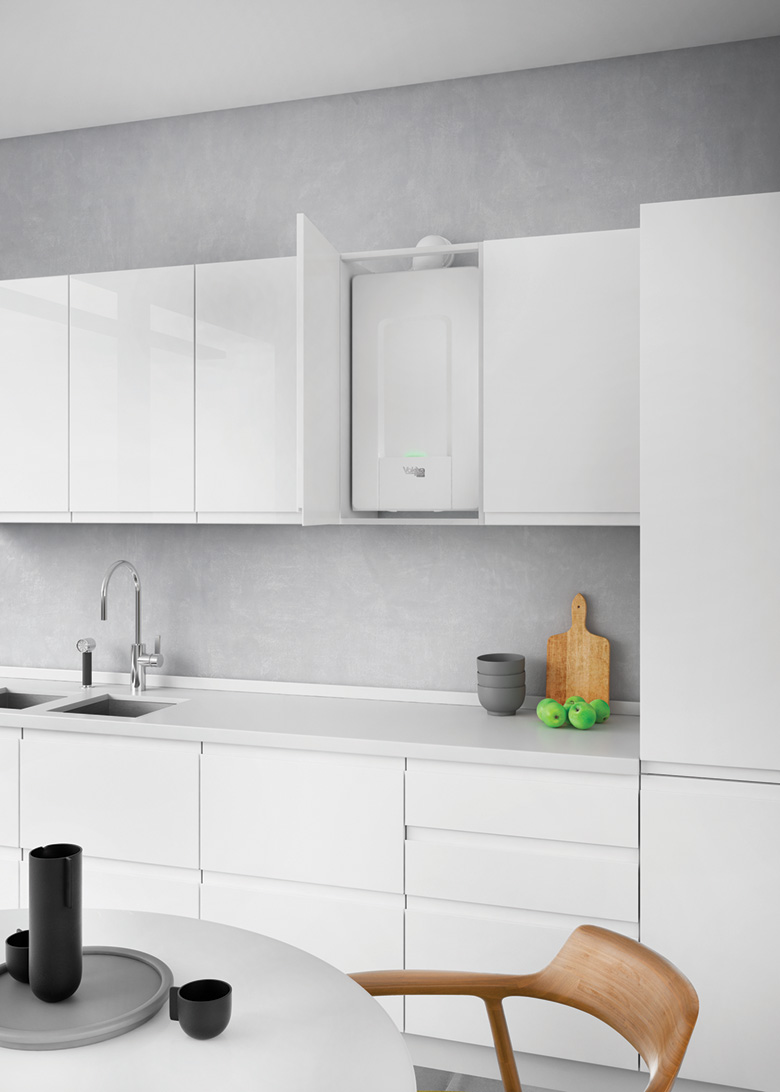
Jan 15, 2019 | News & Events
If you thought combination gas boilers were only suitable for smaller homes, then think again. Alister Maclachlan, product director of Vokèra by Riello, explains how the latest high output appliances can meet the higher demand for heating and hot water in larger properties as well as those homes with multiple outlets.
When choosing a combi gas boiler that best fits the needs of a property and its occupants it’s not all about the size of the dwelling. For example, an older, four-bedroom house with one main bathroom and just two occupants may not use as much hot water as, say, a family living in a modern semi-detached that has an en-suite, family bathroom and downstairs cloakroom. The bedroom-bathroom ratio has certainly increased in recent years, particularly among new homes. Once seen as something of a luxury in bigger properties, the en-suite bathroom can now be a standard feature in an average-sized new build.
Instant appeal
It is quite common in the UK for domestic hot water to be produced ‘instantaneously’ in a combination boiler. Water is heated on demand as an alternative to using a lower powered boiler that heats domestic hot water over a period of time in a separate thermostatically controlled insulated storage cylinder. As combi boilers don’t require external hot water cylinders or water storage tanks they offer savings in space and installation time, which brings advantages for users and installers alike. And because hot water is only produced when it is needed, having a combi also helps conserve water in the home in accordance with Building Regulations relating to water efficiency. With all these benefits it’s not surprising that this option now represents around 80% of the UK’s domestic boiler market.
Innovative alternative
A combi boiler is designed to provide hot water ‘on tap’ so to speak. When this innovative alternative to the traditional gas boiler first came onto the market around 30 years ago there was a common assumption that the typical output and flow rate of this type of appliance were best suited to smaller homes. This came about, in part, because traditional boilers tended to be sized in accordance with the number of radiators and capacity of the hot water cylinder. So when a homeowner decided to replace their old boiler with a new combi the installer would most likely fit one with the same output, when in fact a higher output was needed to achieve the desired flow rate.
Of course, there wasn’t such a wide choice of outputs available in those early days. This is no longer a problem as most of today’s manufacturers offer high output combination boilers. Vokèra’s evolve 42C, for example, is a 42kW combi with flow rates of over 17 litres per minute at a 35°C temperature rise. It has been specifically developed to provide comfortable, affordable heating and on-demand hot water in larger homes. It can also provide an energy efficient solution for properties with larger central heating requirements and multiple bathrooms.
Ask questions
As already mentioned, specifying the right combi boiler is not simply down to the actual size of a property. More importantly are the number of outlets and the occupants’ expectations when it comes to their heating and hot water supply. In order to understand the latter the installer would be well advised to ask the customer a few lifestyle questions, such as do they prefer baths or showers – or maybe both? And are they likely to want to run two showers simultaneously, or a bath and a shower at the same time? Their answers will indicate the output and flow rates required, enabling the installer to size the boiler accordingly. Another important factor is the likely inlet temperature. This can vary by several degrees across the UK, from the typically colder north to the warmer south, and that difference needs to be taken into consideration when specifying the boiler.
Modulation ratio
When selecting a combi boiler it is also crucial to consider modulation ratios and to remember that performance isn’t just about kW output. Installing a combi boiler with a high maximum output and a wide modulation ratio will deliver optimal efficiency and comfort. A good modulation ratio reduces constant on/off cycling, improving efficiency and boiler longevity. If a boiler has a high maximum output – let’s say 40kW – yet only has a modulation ratio of 4:1 it will only be able to modulate down to 10kW. However, when most rooms have reached the required temperature and radiator TRVs have closed, the demand on the boiler will be considerably less than 10kW. This means that the minimum output of the boiler will be higher than it needs to be, so the boiler will constantly switch on and off, leading to fuel inefficiency. This will also place unnecessary stress on the boiler’s components and parts. A boiler with a high maximum output and a wide modulation ratio, however, will be able to modulate down to an extremely low output, reducing wear and tear on primary components (fewer on/off cycles increase component longevity) and optimising fuel efficiency.
Also, a poor modulation ratio can be a particular problem for combis as it means they will be unable to maintain a stable domestic hot water (DHW) flow temperature at a low flow rate, and might even cause the burner to switch off during operation. This can be a significant issue for end users who prefer showers rather than baths. It is also an important consideration for households that require a constant DHW outlet temperature, such as where there are young children or elderly people who may be at a higher risk of scalding.
The combination gas boiler has certainly come a long way in the last couple of decades and new high efficiency, high output models have busted those outdated myths about poor flow rates. Correctly specified and installed, a modern combi will meet the needs of even the most demanding household in virtually any size property.

















